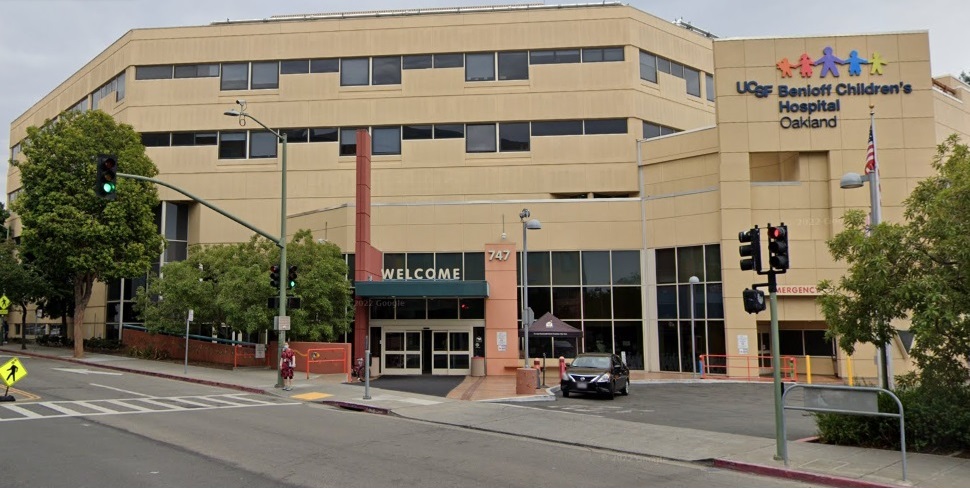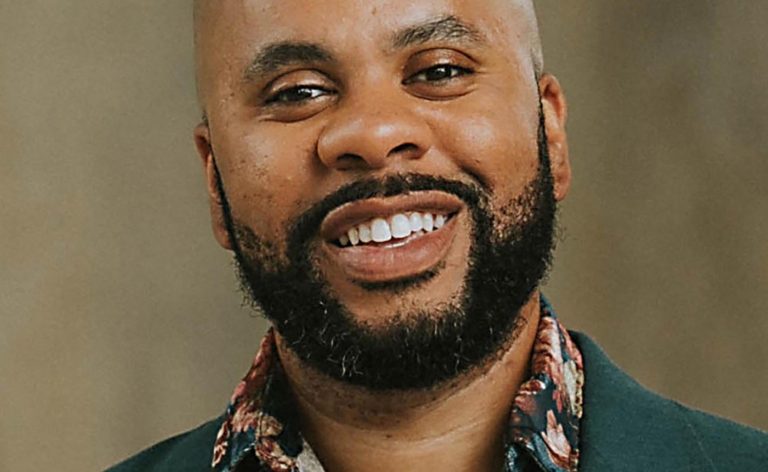OAKLAND — A project to build a modern UCSF Benioff Children’s Hospital Oakland has gained a major milestone through a key jobs deal to prioritize hiring local workers for the $1.6 billion plan.
The Building and Construction Trades Council of Alameda County, a major East Bay labor organization, and Rudolph and Sletten, a big-time construction firm that is the general contractor for the project, have crafted a jobs deal for the project. Overaa Construction, the general contractor for a series of site improvements on the campus, also signed the labor agreement.
UCSF Benioff Children’s Hospital Oakland, a pediatric acute care hospital at 747 52nd Street in Oakland. (Google Maps)
The $1.6 billion development would create a landmark, state-of-the-art hospital and trauma center for children on the medical center campus at 747 52nd Street in Oakland.
“The new hospital project is our covenant to the community to take care of all kids regardless of their socioeconomic level,” Dr. Nicholas Holmes, president of UCSF Benioff Children’s Hospitals, said in an interview with this news organization about the hospital project. “This is to provide the best possible care for children through the region.”
The deal assures a priority will be given to the hiring of local workers for what would be a years-long project that’s slated to be completed in 2030.
“This project is a huge investment in our community that will include union workers from the ground up,” said Andreas Cluver, secretary-treasurer for the Building and Construction Trades Council of Alameda County. “We’re making sure that local residents have access to these jobs, whether they are new to construction or masters in their trade.”
The massive development is expected to double the size of the emergency department, add a new diagnostic imaging suite and increase room sizes as part of a wide-ranging modernization, upgrade and expansion.
“We have outgrown the size of the existing facility,” Dr. Holmes said. “The real driver of this is to meet the needs of the community.”
The workforce agreements set a 30% local hiring goal for both contractors and subcontractors, which UCSF Health described as its commitment to supporting the local economy.
Related Articles
Ikea lost $5,000 when each worker quit. So it began paying more
Silicon Valley salaries are shrinking, leaving workers in the lurch
California job openings tumble 42% in 2 years
California job openings tumble 42% in 2 years, No. 2 drop in US
US economy added a whopping 272,000 jobs in May
“We’re proud to hire local, skilled union workers,” said Gary Taylor, senior project executive at Rudolph and Sletten. “A project of this magnitude can provide beneficial employment opportunities for veterans and small and disadvantaged business enterprises.”
The new and expanded hospital complex will help ensure that children in the East Bay and other areas can be sure to receive top-notch medical and trauma care.
“This will help with patient flow,” Dr. Holmes said. “As a safety net hospital, we want to be sure there are no deterrents to a child receiving medical care and to ensure no child is turned away.”
The project also will add dedicated mental health inpatient beds to address what UCSF Health officials believe is a pressing and unmet need for adolescent mental health care and services.
The five-year construction endeavor is expected to require the hiring of about 400 workers a year until the project is completed in 2030 when the new hospital will open.
“The construction and building trades are the backbone of Oakland,” Oakland Mayor Sheng Thao said. “This project will bring well-paid jobs for union construction workers, job training for apprentices, and new careers for veterans.”
Plus, once the hospital is open, it’s likely that additional hospital staff, including nurses, will need to be hired to work in the new medical center.
“This project is not only for the physical and mental well-being of our community, it also is for the economic vitality of Oakland itself,” Dr. Holmes said. “We will increase the staff accordingly, as mandated by nurse-patient ratios.”












